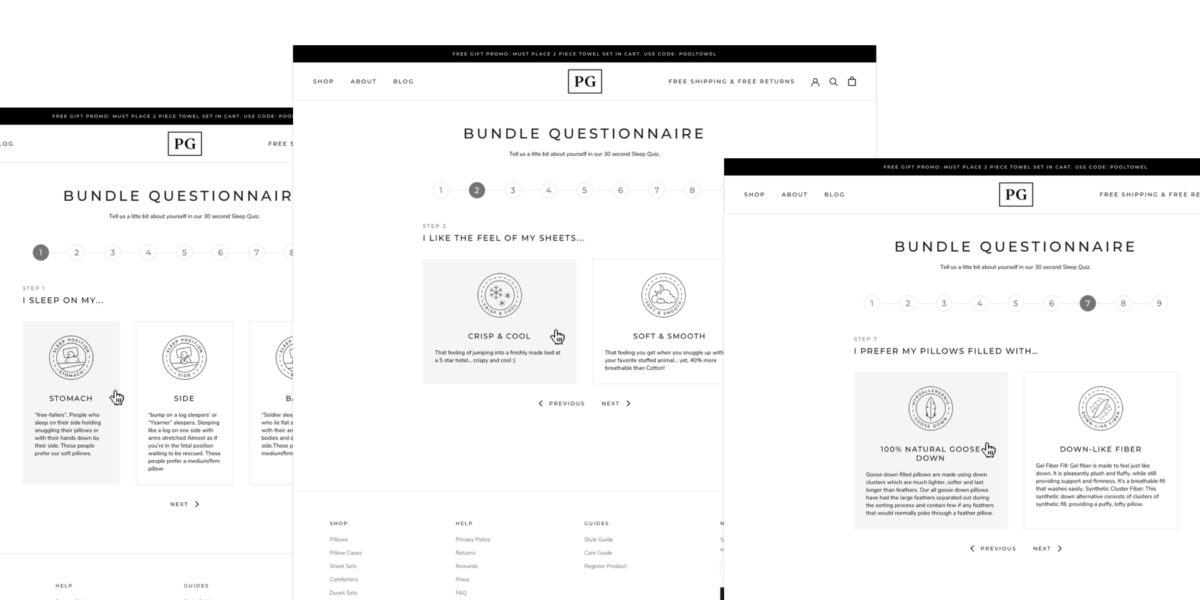From start to finish, there’s a lot more that goes into building a complete website than meets the eye! To say that web design is simply a matter of designing a website leaves out a lot of the important facts. It’s really a multi-faceted process—one that takes quality planning and expert implementation to get right. Let’s take a look at the major components of a comprehensive web development project…
One: Planning
First things first, every website must be carefully planned. Here at Sleepless Media, we usually start right away when receiving a quote request. We’ll look at all of the information provided and conceptualize a better feel for how the overall project will flow and what details will entail. As we evaluate projects, we maintain an ongoing dialogue with our customers to ensure we completely understand the goals and gather all of the right information.
Two: Project Management
Once the details are all rounded up and put in order, the next step is sending over a detailed formal proposal. After an agreement is reached and the deal is inked, then it’s time to start taking care of business. This is where it’s integral to have an efficient, organized project management system in place—without proactive project management to track and guide the web development project over each phase through realization of its full scope, there’s really very little chance of putting all of the pieces together so they actually form a desirable, high-performance finished product. Project management is just that vital.
Three: Copywriting
It’s always a good idea to know going into a new web development project that copywriting is one of the most essential components of a good website. It truly is the lifeblood of the site when it comes to SEO and drawing visitors’ attention. The thing is, it’s not automatically a part of web design (even though the best websites are designed to work hand-in-hand with their copy). Many folks choose to supply their own site copy—we can work with this and will even be happy to give you some pointers. We can also help you produce compelling optimized copy; just ask us about our copy and content process.
Four: Creating The Look & Feel
This phase is the artistic process—the graphic design, if you will. Usually done by expert professional graphic designers using industry-standard software like Photoshop, the look and feel must be both attractive and thematically appropriate for the subject of the website being designed. The look and feel can make or break a website.
Five: Production & Development
Once the visual design of the site is complete and agreed upon, then the next phase of the web development process is to “slice” the design. This is kind of a reverse engineering process where the visual and style elements are broken down into optimized pieces and tied together through standards-compliant web code. Doing this right is really an art of its own!
Six: Web Programming
With the front-end of the website in place now, the next phase of the web development process is building the systems on the back-end that make it work. The cogs of the machinery include E-Commerce systems, dynamic databases, and content management systems (CMS), along with other detailed programming work.
Seven: Testing
After the programming phase is complete, all of the components are put together in their intended final form and the quality assurance phase kicks into full gear. Extensive testing for standards, functionality, and compatibility are very important to making sure full satisfaction is met. After all, all of the prior phases of development would go to waste if the finished product simply didn’t work right.
Eight: Launch
Only once comprehensive testing and debugging is complete will the site be ready to launch. But once it is, this is the most exciting part…putting your new website creation on to the web after extensive planning, development, and testing.
So, would you agree that building a great website is a little bit more detailed than just patching together some code and content and calling it finished? It’s true—quality web development requires significant planning and preparation; but as the project wraps up, it becomes very evident that the attention to detail is definitely worth all of the effort!
















